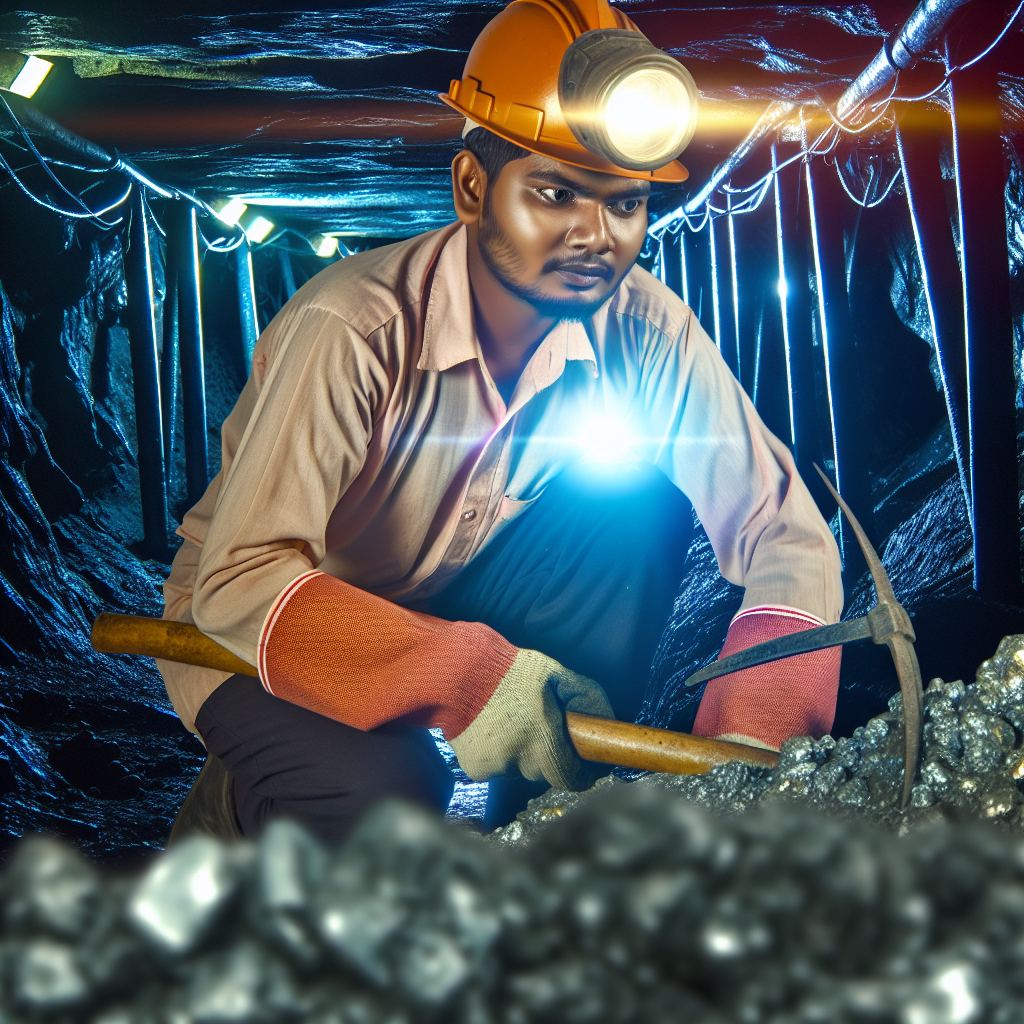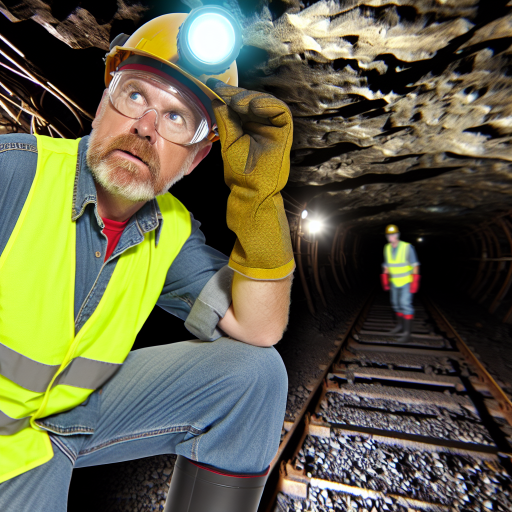Introduction:
Understanding the impact of mining on the environment is crucial in today’s world.
Mining activities have significant consequences on ecosystems, biodiversity, and natural resources.
It is essential to address this issue due to the far-reaching negative effects it can have on the environment.
This includes land degradation, pollution, and loss of wildlife habitats.
Overview of mining operations:
Explaining the process of mining, which involves extracting valuable minerals or other geological materials from the earth.
Discussing the different types of mining methods used, such as surface mining, underground mining, and placer mining.
Scale of mining activities globally:
- Highlighting the significant contribution of mining to various industries, including the energy sector, construction, and manufacturing.
- Examining the scale of mining operations worldwide, which involves the extraction of millions of tons of minerals each year.
Contribution of mining to the environment:
- Addressing the environmental impact of mining activities, such as deforestation, habitat destruction, and water pollution.
- Discussing the role of mining in climate change, as it contributes to greenhouse gas emissions and global warming.
Methods used in mining:
- Exploring the different techniques employed in mining, including open-pit mining, underground mining, and mountain top removal.
- Highlighting the use of heavy machinery and explosives in mining operations, which can have a significant impact on the environment.
Regulations and policies:
- Discussing the importance of regulations and policies in mitigating the environmental impact of mining activities.
- Highlighting the role of government agencies and international organizations in enforcing environmental laws and standards in the mining industry.
Sustainable mining practices:
- Exploring sustainable mining practices, such as reclamation and reforestation efforts, to restore and rehabilitate mined lands.
- Discussing the use of green technologies and renewable energy sources in mining operations to reduce environmental impact.
Key Points on Mining and Sustainability
- Summarizing the key points discussed in the blog post, including the impact of mining on the environment and the importance of sustainable mining practices.
- Emphasizing the need for continued research and innovation in the mining industry to minimize environmental damage and promote sustainable development.
Environmental Impacts of Mining
Mining activities have a significant impact on the environment.
It affects not only the immediate surroundings but also ecosystems and biodiversity at large.
It is crucial to understand and address these negative effects.
This understanding will help mitigate the environmental impact of mining.
Negative Effects on Air, Water, and Soil Quality
- Air pollution from dust and emissions harming respiratory health.
- Water contamination from runoff carrying toxic chemicals into water bodies.
- Soil degradation from erosion, compaction, and chemical changes impacting fertility.
Destruction of Ecosystems and Biodiversity Loss
- Clearing of vegetation and habitat destruction for mining operations.
- Disruption of ecosystems, leading to loss of plant and animal species.
- Fragmentation of habitats, isolating populations and reducing genetic diversity.
- Pollution of water bodies affecting aquatic life and food chains.
Delve into the Subject: Top Safety Tips for Dockworkers Handling Heavy Cargo
Mining Operations and Water Contamination:
Water pollution is a significant consequence of mining operations.
This issue often goes unnoticed.
Let’s delve into the ways mining activities can contaminate water sources.
We will also look at real-life examples of incidents that have had severe consequences.
- Open-pit mining exposes sulfides to the air and water.
- This process creates sulfuric acid which pollutes water sources.
- Chemicals used in mining processes often leach into groundwater.
- This contamination affects drinking water supplies.
- Waste rock and tailings from mining sites can release heavy metals.
- These toxins often find their way into nearby rivers and streams.
- Improper disposal of mining waste can lead to acid mine drainage.
- Acid mine drainage is a serious form of water pollution.
Examples of Mining-Related Water Pollution Incidents:
- The 2015 Gold King Mine spill in Colorado released 3 million gallons of contaminated water into the Animas River.
- In 2014, a tailings dam at the Mount Polley copper and gold mine in British Columbia failed.
- This incident released billions of gallons of wastewater.
- In the Philippines, the Marinduque mine tailings spill in 1996 polluted the Mogpog River.
- This pollution affected aquatic life and local communities.
- The Ok Tedi mine in Papua New Guinea has discharged mine waste into the Fly River for decades.
- This activity has caused widespread ecological damage.
These incidents highlight the devastating impact of mining on water quality and the environment.
Contamination of water sources due to mining activities poses serious risks to ecosystems.
This includes threats to wildlife and human health.
It is crucial for mining companies to prioritize responsible environmental management practices.
They should adhere to stringent regulations to prevent further water pollution incidents.
Transform Your Career Today
Unlock a personalized career strategy that drives real results. Get tailored advice and a roadmap designed just for you.
Start NowGovernment agencies and regulatory bodies play a crucial role in monitoring.
They ensure compliance with environmental standards in the mining industry.
Public awareness and community engagement are also essential.
They hold mining companies accountable for their environmental footprint.
Advocating for sustainable mining practices is vital.
You Might Also Like: Top Tools for Efficient Drywall Installation
Impact of Mining on Air Quality
When it comes to the impact of mining on the environment, one of the most significant concerns is the issue of air pollution.
Mining operations release a variety of harmful gases and particulate matter into the air.
This can have serious consequences for both human health and the environment.
Release of Harmful Gases and Particulate Matter
Mining activities involve the use of explosives, heavy machinery, and transportation vehicles, which contribute to the release of pollutants into the air.
Some of the most common gases emitted during mining include sulfur dioxide, nitrogen oxides, carbon monoxide, and volatile organic compounds.
These gases can have a range of negative effects on the environment, from acid rain to smog formation.
In addition to gases, mining operations also generate a significant amount of particulate matter, such as dust and tiny particles of metals and minerals.
These particles can become airborne and be carried long distances by wind, settling on vegetation, water bodies, and even residential areas.
The inhalation of these particles can lead to respiratory issues and other health problems.
Impact of Air Pollution on Human Health
The release of harmful gases and particulate matter from mining activities can have serious consequences for human health.
Inhalation of pollutants can lead to a variety of health issues, including respiratory problems, cardiovascular diseases, and even cancer.
Particulate matter, in particular, has been linked to an increased risk of lung cancer and other respiratory illnesses.
Children, the elderly, and individuals with pre-existing health conditions are especially vulnerable to the effects of air pollution.
Prolonged exposure to pollutants from mining activities can worsen existing health conditions.
Transform Your Career Today
Unlock a personalized career strategy that drives real results. Get tailored advice and a roadmap designed just for you.
Start NowIt can lead to a higher incidence of respiratory infections and other illnesses.
Additionally, communities located near mining sites are at a higher risk of exposure to pollutants.
This results in a disproportionate burden on their health.
Impact of Air Pollution on the Environment
Air pollution from mining activities not only affects human health but also has a significant impact on the environment.
Pollutants released into the air can damage vegetation, soil, and water bodies, leading to a decline in biodiversity and ecosystem health.
Acid rain, a result of sulfur dioxide emissions, can acidify soil and water bodies, affecting plant growth and aquatic life.
Particulate matter generated from mining operations can also have detrimental effects on the environment.
Dust deposition on vegetation can reduce photosynthesis and plant growth, leading to a decline in biodiversity and ecosystem function.
In water bodies, sedimentation from airborne particles can smother aquatic life and degrade water quality.
See Related Content: The Role of Lumberjacks in the Timber Industry
Impact of Mining Activities on Soil
When it comes to mining, one of the major environmental concerns is soil degradation.
Let’s delve into how mining activities can have a detrimental impact on the soil:
Soil Erosion
Mining operations often involve clearing large areas of land.
This can remove the vegetation that helps to anchor the soil in place.
Without this vegetation, the soil becomes vulnerable to erosion by wind and water.
Land Subsidence
Some forms of mining, such as underground mining, can cause land subsidence.
This occurs when underground voids created by mining activities collapse.
Land subsidence can disrupt ecosystems and infrastructure.
Loss of Vegetation
Clearing vegetation for mining activities not only contributes to soil erosion.
It also directly leads to the loss of habitat for plant and animal species.
Transform Your Career Today
Unlock a personalized career strategy that drives real results. Get tailored advice and a roadmap designed just for you.
Start NowThis loss of biodiversity can have cascading effects on ecosystems.
Long-Term Effects of Soil Degradation
The impacts of soil degradation due to mining activities can have lasting consequences.
Agricultural Productivity
Soil degradation can reduce the fertility of the land.
This reduction makes it more challenging for farmers to grow crops.
Erosion can wash away valuable topsoil.
This leads to a decline in crop yields over time.
Land subsidence can also disrupt irrigation systems.
This further impacts agricultural productivity.
Local Ecosystems
The loss of vegetation and soil erosion can disrupt local ecosystems.
This disruption affects plant and animal species that rely on the land.
They depend on the land for habitat and food.
This disruption can lead to a decline in biodiversity.
It can also result in the loss of key ecological functions.
Such functions include carbon sequestration and water filtration.
Soil degradation caused by mining activities is a significant environmental issue.
It has far-reaching consequences.
It is essential for mining companies to implement sustainable practices.
Rehabilitation efforts are necessary to mitigate the impact of mining on soil health.
Additionally, protecting local ecosystems should be a priority.
Find Out More: How to Become a Certified Pipelayer: A Step-by-Step Guide
Transform Your Career Today
Unlock a personalized career strategy that drives real results. Get tailored advice and a roadmap designed just for you.
Start Now
Case studies of mining disasters
Notable examples of mining accidents and disasters
- The Mount Polley mine disaster in British Columbia in 2014 released over 6.6 billion gallons of wastewater into nearby lakes and rivers.
- The Ok Tedi mine in Papua New Guinea experienced ongoing environmental degradation due to the discharge of mine tailings into the local river system.
- The Aberfan disaster in Wales in 1966 occurred when a coal waste tip collapsed, burying a primary school and killing 116 children and 28 adults.
- The Soma mine disaster in Turkey in 2014 resulted in the deaths of 301 miners due to a fire caused by a faulty electrical transformer.
Analyze the root causes of these disasters
These mining disasters were primarily caused by a combination of factors, including inadequate safety measures, lack of proper risk assessment, disregard for environmental regulations, and negligence on the part of mining companies.
In the Mount Polley mine disaster, a tailings dam failed due to poor construction and maintenance practices.
Similarly, at the Ok Tedi mine, the continuous discharge of mine tailings into the river system was a result of the company prioritizing profits over environmental protection.
The Aberfan disaster was a tragic consequence of improper waste disposal practices, with the coal waste tip located dangerously close to the village and school.
In the case of the Soma mine disaster, the lack of proper ventilation, inadequate escape routes, and faulty equipment contributed to the high number of casualties.
Lessons learned from these disasters
- Strict adherence to safety protocols and regulations is crucial to prevent mining disasters and protect the environment.
- Regular monitoring and maintenance of mining infrastructure, such as tailings dams, can help mitigate the risk of catastrophic failures.
- Transparency and accountability are essential for ensuring that mining companies operate responsibly and prioritize environmental stewardship.
- Community engagement and consultation are key in identifying and addressing potential environmental and social impacts of mining activities.
These mining disasters serve as a stark reminder of the significant environmental consequences of irresponsible mining practices. They highlight the urgent need for sustainable and ethical approaches to mineral extraction.
Government regulations play a crucial role in mitigating the environmental impacts of mining.
Regulations for Environmental Protection
- Regulations ensure that mining companies comply with strict environmental standards.
- They set limits on emissions, waste disposal, and water usage to protect ecosystems.
- Violators of these regulations may face fines or even closure of mining operations.
Sustainable Mining Practices
- Adopting sustainable mining practices is essential to minimize harm to the environment.
- Companies can implement technologies that reduce the footprint of mining operations.
- Using renewable energy sources such as solar or wind power can lower emissions.
- Recycling water and utilizing efficient water management systems can reduce water consumption.
- Rehabilitating mined areas and restoring ecosystems after mining activities can mitigate environmental damage.
Technologies for Environmental Protection
- Advanced technologies such as remote sensing and GIS help monitor environmental impacts.
- Drones and satellite imagery can be used to track changes in land use and vegetation cover.
- Software and modeling tools assist in predicting the impacts of mining activities on ecosystems.
Government regulations, sustainable mining practices, and innovative technologies are crucial in minimizing the environmental impacts of mining.
By working together, stakeholders can ensure that mining activities have a reduced impact on the environment and ecosystems for the benefit of current and future generations.
Environmental Impacts of Mining Operations
The impact of mining on the environment is undeniable and concerning.
The extraction of minerals and resources leads to deforestation, soil erosion, loss of biodiversity, and water pollution.
It is crucial for mining companies to adopt responsible practices to mitigate these negative effects.
Implementing proper waste management, reclamation of mined areas, and reducing the use of harmful chemicals can help minimize environmental damage.
Furthermore, stakeholders, including governments, communities, and environmental organizations, must work together to ensure that mining activities are sustainable and environmentally friendly.
By emphasizing the need for responsible mining practices, we can protect our natural resources and ecosystems for future generations.
The long-term health of our planet depends on how we manage and regulate mining operations to minimize their impact on the environment.
Therefore, it is essential for all parties involved to prioritize environmental conservation and sustainable development in the mining industry.
Only through collective effort and commitment can we safeguard our environment and ensure a better future for all.
Additional Resources
The EV Battery Supply Chain Explained – RMI
Transform Your Career Today
Unlock a personalized career strategy that drives real results. Get tailored advice and a roadmap designed just for you.
Start Now



